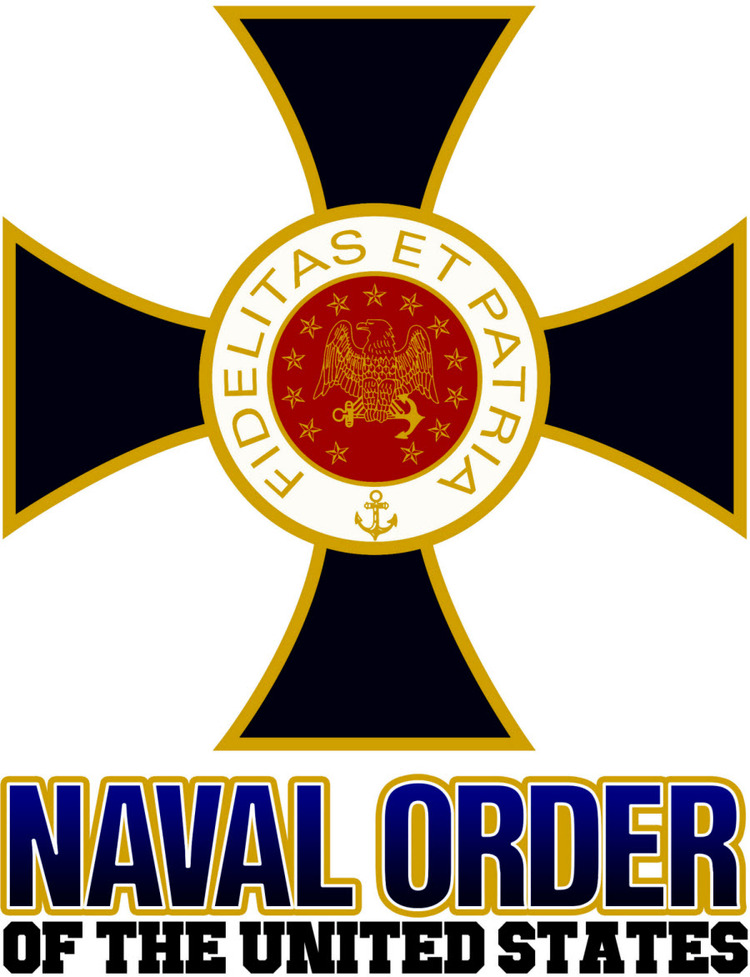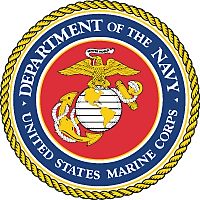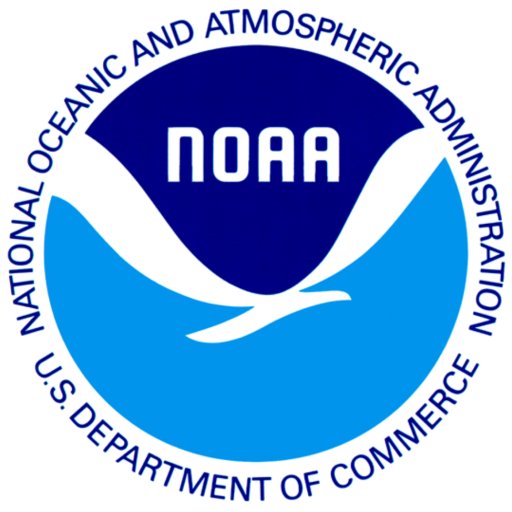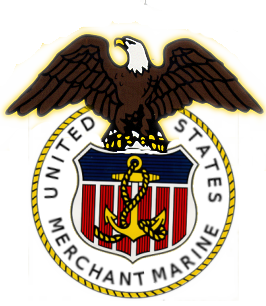
by Richard D. Camp
Finalist for NOUS' 2024 Samuel Eliot Morison Award for Naval Literature
Marine historian Dick Camp knew Craig personally and has woven Craig’s own account of his service into context. Craig’s recollections are more than recitations of facts, his account of leading in World War II provides the perspective of a combat leader balancing the mission objectives with responsibility for the men he leads. His account of fighting during the Korean War section provides insight into how unprepared the United States was and how a determined, well-led Marine brigade was able to stop the North Korean advance and prevent them from overrunning South Korea.
Ordering Info: Casemate
Publisher: Casemate Publishers, 2023

by Stan Fisher
Finalist for NOUS' 2024 Samuel Eliot Morison Award for Naval Literature
The ability of the United States Navy to fight and win a protracted war in the Pacific was not solely the result of technology, tactics, or leadership. Naval aviation maintenance played a major role in the U.S. victory over Japan in the second World War. The naval war against Japan did not achieve sustained success until enough aircraft technicians were available to support the high tempo of aviation operations that fast carrier task force doctrine demanded.
Ordering Info: Naval Institute Press
Publisher: Naval Institute Press, 2023

by Phillip T. Parkerson
Finalist for NOUS' 2024 Samuel Eliot Morison Award for Naval Literature
The Brooklyn-class light cruiser USS Boise (CL-47) was one of the most famous US combat ships of World War II, already internationally renowned following her participation in the naval battles in the Solomons in 1942.
USS Boise’s war not only gives us an insight into how one ship navigated a global conflict, but also an insight into the experiences of the men who served on her, and a new perspective on the naval campaigns of the war.
Ordering Info: Casemate
Publisher: Casemate Publishers, 2023

by Mark E. Stille
Finalist for NOUS' 2024 Samuel Eliot Morison Award for Naval Literature
Leyte was a huge and complex action, actually consisting of four major battles, each of which are broken down in detail in this book, using original sources. The plans of both sides, and how they dictated the events that followed, are also examined critically.
Ordering Info: Osprey
Publisher: Osprey Publishing, 2023

by Lewis F. McIntyre
Finalist for NOUS' 2023 Samuel Eliot Morison Award for Naval Literature
The US Navy’s “Take Charge and Move Out” (TACAMO) mission provides essential airborne communications to the US nuclear deterrence forces. Today it is a thriving community, respected by the Navy and the US strategic defense forces.
But it wasn’t always so. Despite the enormous importance of the mission, for the first decade of their existence, the TACAMO squadrons did not provide a viable career path for officers, instead being a “one and done” tour for the junior officers who found themselves unluckily so assigned. A second tour in the squadrons was considered to be professional suicide. But in 1975, inspired by a significant commanding officer, a handful of lieutenants put their faith in a community that did not yet exist, betting their careers on that second tour. From their faith and courage was born the TACAMO community.
This is the story of the birth of TACAMO, in the words of those who built the community from scratch.
Ordering Info: Amazon
Publisher: Casemate, 2022

by Paul Stillwell
Winner of NOUS' 2022 Samuel Eliot Morison Award for Naval Literature
The first-ever biography of Vice Admiral Willis A. Lee Jr., who served a key role during World War II in the Pacific. Battleship Commander explores Lee's life from boyhood in Kentucky through his eventual service as commander of the fast battleships from 1942 to 1945. Paul Stillwell draws on more than 150 first-person accounts from those who knew and served with Lee from boyhood until the time of his death.
Ordering Info: Naval Institute Press
Publisher: Naval Institute Press, 2021
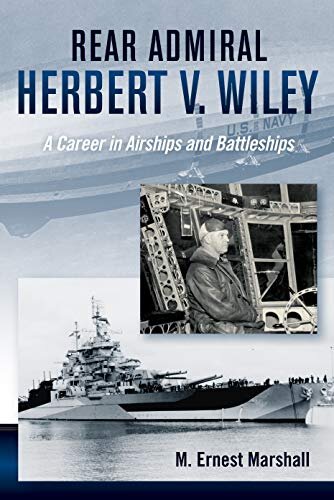
by M. Ernest Marshall
Winner of NOUS' 2020 Samuel Eliot Morison Award for Naval Literature
Suspecting a war with Japan somewhere over the horizon, the American Navy needed a means of conducting surveillance of the vast Pacific Ocean to guard against invasion. Surface vessels were too slow, and the Navy had too few of them, and airplanes lacked the range to cover the Pacific Ocean. The Navy turned to airships (dirigibles) as a solution - vehicles that could range for thousands of miles in the air on a single tank of fuel. Rear Admiral Herbert V. Wiley and Vice Admiral Charles E. Rosendahl - close friends - were with the Navy's airship program from beginning to end. After the loss of the Navy's last airship, Rosendahl went on to develop the blimp program that guarded America's entire coastline during WW II.
Ordering Info: Amazon
Publisher: Naval Institute Press, 2019

by Stephen M. Younger
Finalist for NOUS' 2019 Samuel Eliot Morison Award for Naval Literature
USS Nevada (BB-36) was America's first modern battleship. When her keel was laid in 1912, kings and emperors still ruled much of the world. When she finally slipped beneath the waves in 1948, America was the undisputed global superpower.
Nevada was revolutionary for her time: the first "superdreadnought"; the first U.S. warship to be oil fired; the first to have a triple-gun main turret; and, the first to have all-or-nothing armor. In World War I, she was based in Queenstown, Ireland, to provide protection for American convoys bringing troops to Europe. She survived the naval reduction treaties of the 1920s and was rebuilt in 1928 with the latest technology. The only battleship to get underway at Pearl Harbor, suffered damage from Japanese bombs and torpedoes and sank in shallow water. Raised and repaired, she did convoy duty in the North Atlantic before joining the invasion fleet for D-Day and the landings in Southern France. Shifting to the Pacific, Nevada provided bombardment support at Iwo Jima and Okinawa. The end of the war saw her outgunned and outmoded, but her contributions were not over. In 1946, she survived not one but two atomic tests, the second of which left the battleship too radioactive for scrapping. On a sunny day in 1948, Nevada was towed off the coast of Oahu and used for target practice. After five days of pounding by everything the Navy could throw her, Nevada was dispatched by a torpedo. She died a warrior's death.
Silver State Dreadnought is the story of a remarkable ship, but it is also the story of the remarkable men who sailed in her. Nevada's first captain, William S. Sims, brought his unique style of leadership to America's premiere battleship and set the tone for what became known as the "Cheer Up Ship." As Nevada aged, the ship gained the affectionate name "The Old Maru," beloved by all who served in her.
Ordering Info: Amazon
Publisher: Naval Institute Press, 2018

by John Wukovits
Winner of NOUS' 2018 Samuel Eliot Morison Award for Naval Literature
An epic narrative of World War II naval action that brings to life the sailors and exploits of the war's most decorated destroyer squadron. When Admiral William Halsey selected Destroyer Squadron 21 (Desron 21) to lead his victorious ships into Tokyo Bay to accept the Japanese surrender, it was the most battle-hardened US naval squadron of the war. But it was not the squadron of ships that had accumulated such an inspiring resume; it was the people serving aboard them. Sailors, not metallic superstructures and hulls, had won the battles and become the stuff of legend. Men like Commander Donald MacDonald, skipper of the USS O'Bannon, who became the most decorated naval officer of the Pacific war; Lieutenant Hugh Barr Miller, who survived his ship's sinking and waged a one-man battle against the enemy while stranded on a Japanese-occupied island; and Doctor Dow "Doc" Ransom, the beloved physician of the USS La Vallette, who combined a mixture of humor and medical expertise to treat his patients at sea, epitomize the sacrifices made by all the men and women of World War II. Through diaries, personal interviews with survivors, and letters written to and by the crews during the war, preeminent historian of the Pacific theater John Wukovits brings to life the human story of the squadron and its men who bested the Japanese in the Pacific and helped take the war to Tokyo.
Ordering Info: Amazon
Publisher: Da Capo Press, 2017
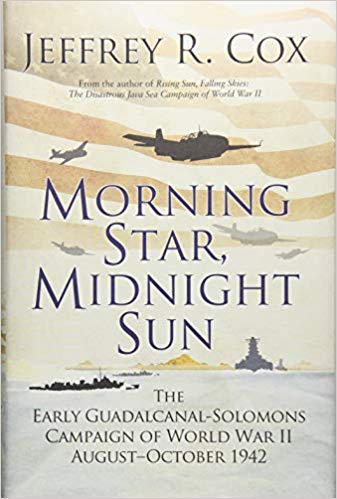
by Jeffrey Cox
Finalist for NOUS' 2018 Samuel Eliot Morison Award for Naval Literature
Following the disastrous Java Sea campaign, the Allies stopped the Japanese advance at Coral Sea and Midway. But the Japanese still threatened to build a network of bases in the South Pacific and threatened to cut off Australia. In response, Allies made a desperate move by starting their first offensive of the Pacific War. Their first target: a new Japanese airfield in a relatively unknown place in the Solomon Islands called Guadalcanal.
Hamstrung by obsolete pre-war thinking and a bureaucratic mind-set, the US Navy had to adapt on the fly in order to compete with the mighty Imperial Japanese Navy. Starting with the amphibious assaults on Guadalcanal and Tulagi and continuing with the worst defeat in US Navy history, the campaign quickly turned into a see-saw struggle where the evenly matched foes struggled to gain the upper hand and grind out a victory.
Following on from his hugely successful book Rising Sun, Falling Skies, Jeffrey R. Cox tells the gripping story of the first Allied offensive of the Pacific War, as they sought to regain dominance in the Pacific.
Ordering Info: Amazon
Publisher: Osprey Publishing, 2018
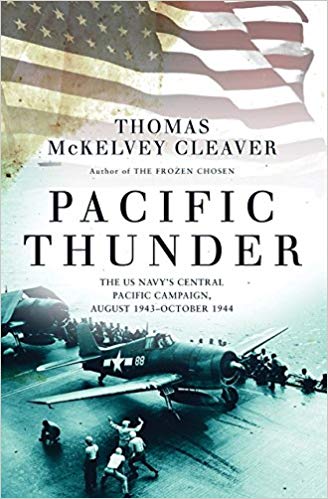
by Thomas McKelvey Cleaver
Finalist for NOUS' 2018 Samuel Eliot Morison Award for Naval Literature
On October 27, 1942, four “Long Lance” torpedoes fired by the Japanese destroyers Makigumoand Akigumo exploded in the hull of the aircraft carrier USS Hornet (CV-8). Minutes later, the ship that had launched the Doolittle Raid six months earlier slipped beneath the waves of the Coral Sea. Of the pre-war carrier fleet the Navy had struggled to build over 15 years, only three were left: USS Enterprise, which had been badly damaged in the battle of Santa Cruz; the USS Saratoga (CV-3), which lay in dry dock, victim of a Japanese submarine torpedo; and the USS Ranger (CV-4), which was in mid-Atlantic on her way to support Operation Torch.
For the American naval aviators licking their wounds in the aftermath of this defeat, it would be difficult to imagine that within 24 months of this event, Zuikaku, the last survivor of the carriers that had attacked Pearl Harbor, would lie at the bottom of the sea. Alongside it lay the other surviving Japanese carriers, sacrificed as lures in a failed attempt to block the American invasion of the Philippines, leaving the United States to reign supreme on the world's largest ocean.
This is the fascinating account of the Central Pacific campaign, one of the most stunning comebacks in naval history as in just 14 months the US Navy went from the jaws of defeat to the brink of victory in the Pacific.
Ordering Info: Amazon
Publisher: Osprey Publishing, 2017
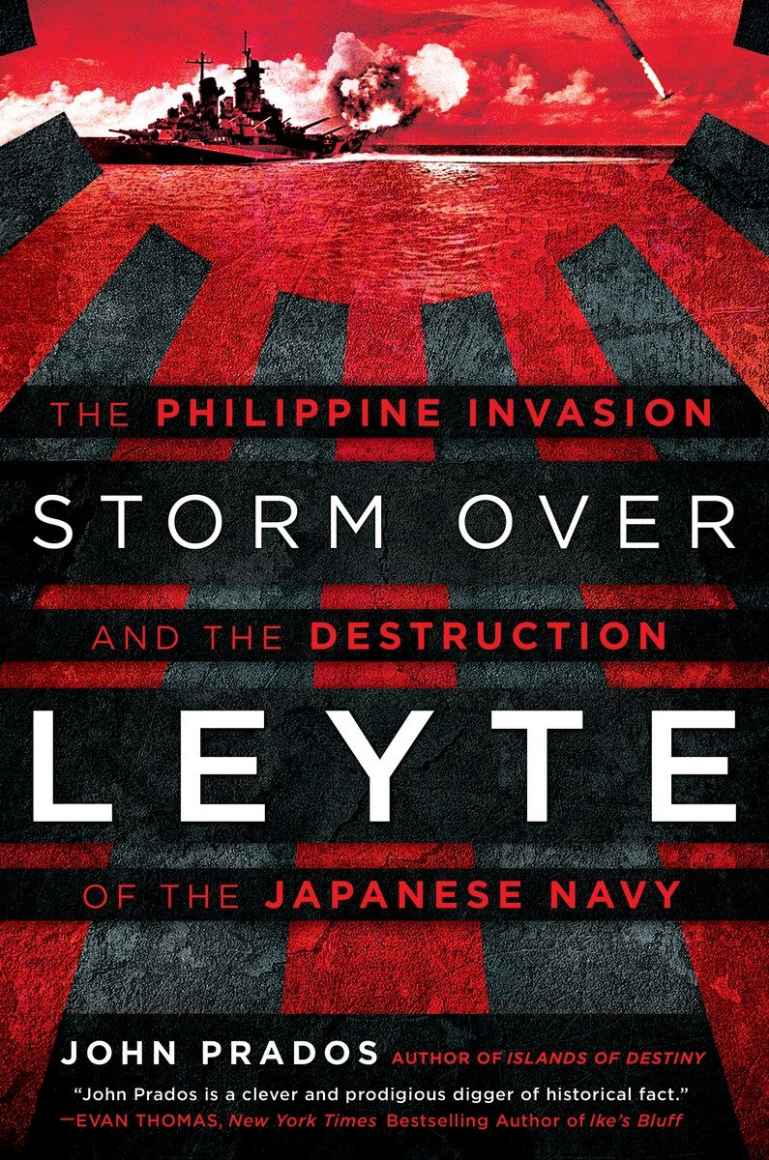
by John Prados
Finalist for NOUS' 2017 Samuel Eliot Morison Award for Naval Literature
As Allied ships prepared for the invasion of the Philippine island of Leyte, every available warship, submarine and airplane was placed on alert while Japanese admiral Kurita Takeo stalked Admiral William F. Halsey’s unwitting American armada. It was the beginning of the epic Battle of Leyte Gulf—the greatest naval battle in history.
Acclaimed historian John Prados gives readers an unprecedented look at both sides of this titanic naval clash, demonstrating that, despite the Americans’ overwhelming superiority in firepower and supplies, the Japanese achieved their goal, inflicting grave damage on U.S. forces. And for the first time, readers will have access to the naval intelligence reports that influenced key strategic decisions on both sides.
Drawing upon a wealth of untapped sources—U.S. and Japanese military records, diaries, declassified intelligence reports and postwar interrogation transcripts—Prados offers up a masterful narrative of naval conflict on an epic scale.
Ordering Info: Amazon
Publisher: Caliber, Penguin Group (USA), 2016
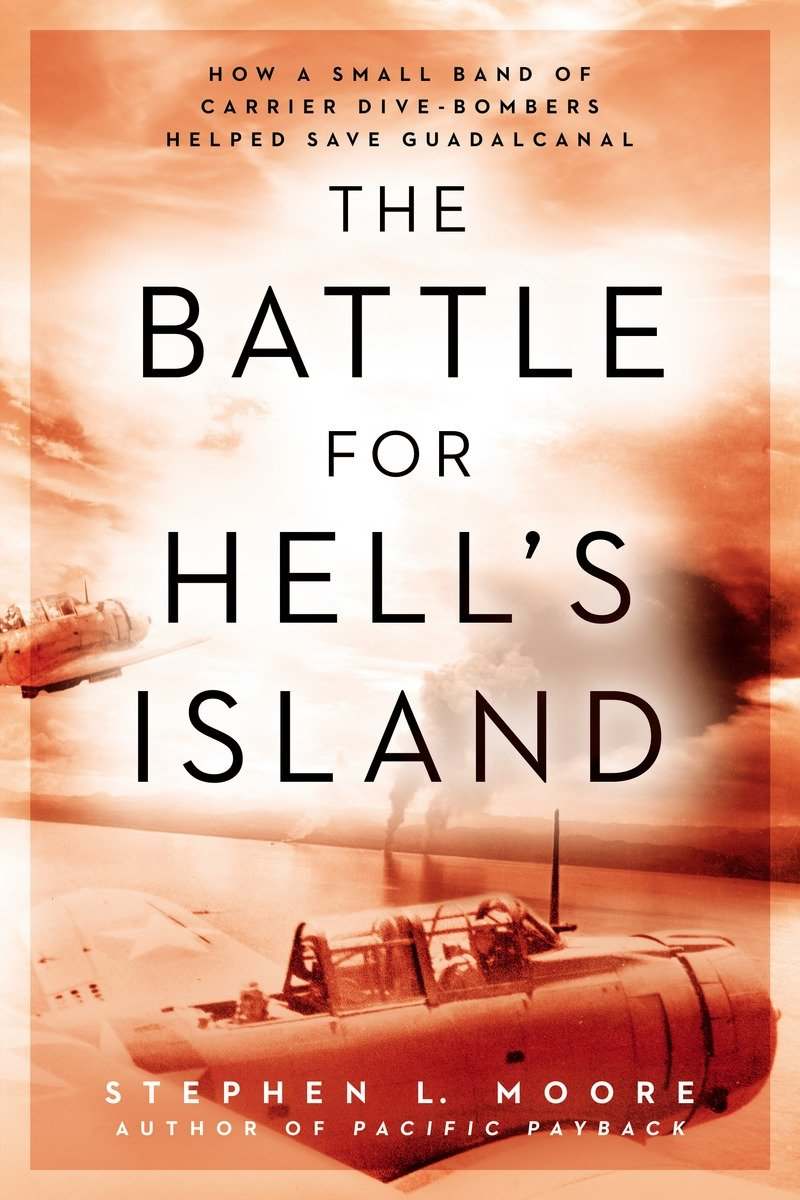
by Stephen L. Moore
Finalist for NOUS' 2016 Samuel Eliot Morison Award for Naval Literature
Amid a seeming stalemate, a small group of U.S. Navy dive-bombers is called upon to help determine the island’s fate. When their carriers are lost, they are forced to operate from Henderson Field, a small dirt-and-gravel airstrip on Guadalcanal.
They help form the Cactus Air Force, tasked with making dangerous flights from their jungle airfield while holding the line against Japanese air assaults, warship bombardments, and sniper attacks from the jungle. When the Japanese launch a final offensive to take the island, these dive-bomber jocks answer the call of duty—turning back an enemy warship armada, fighter planes, and a convoy of troop transports.
Ordering Info: Amazon
Publisher: New American Library (Penguin Random House), 2015
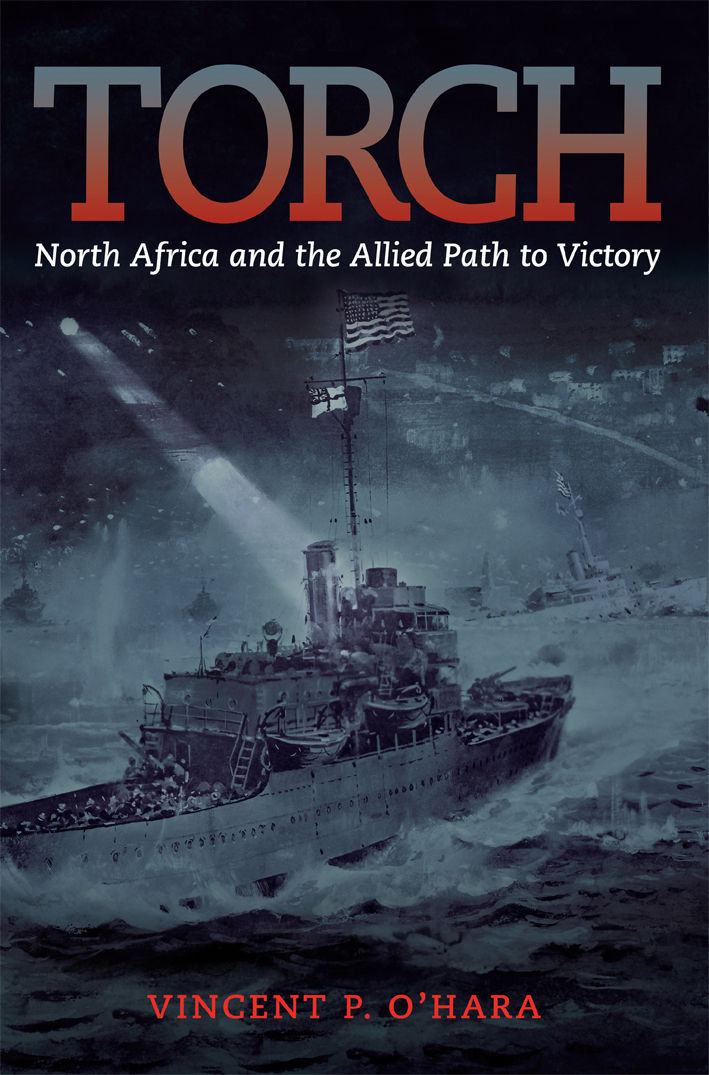
by Vincent O'Hara
Finalist for NOUS' 2016 Samuel Eliot Morison Award for Naval Literature
World War II had many superlatives, but none like Operation Torch—a series of simultaneous amphibious landings, audacious commando and paratroop assaults, and the Atlantic’s biggest naval battle, fought across a two thousand mile span of coastline in French North Africa. The risk was enormous, the scale breathtaking, the preparations rushed, the training inadequate, and the ramifications profound.
Torch was the first combined Allied offensive and key to how the Second World War unfolded politically and militarily. Nonetheless, historians have treated the subject lightly, perhaps because of its many ambiguities. As a surprise invasion of a neutral nation, it recalled German attacks against countries like Belgium, Norway, and Yugoslavia. The operation’s rationale was to aid Russia but did not do this. It was supposed to get Americans troops into the fight against Germany but did so only because it failed to achieve its short-term military goals. There is still debate whether Torch advanced the fight against the Axis, or was a wasteful dispersion of Allied strength and actually prolonged the war.
Ordering Info: Amazon
Publisher: Naval Institute Press, 2015

by John Wukovits
Finalist for NOUS' 2016 Samuel Eliot Morison Award for Naval Literature
On April 16, 1945, the crewmen of the USS Laffey heroically withstood twenty-two kamikaze attacks at Okinawa in what the US Navy called "one of the great sea epics of the war." Using scores of personal interviews with survivors, the memoirs of crew members, and the sailors' wartime correspondence, historian John Wukovits breathes life into this nearly forgotten event and makes the ordeal of the Laffeyand her crew a story for the ages.
Ordering Info: Amazon
Publisher: Da Capo Press, 2015
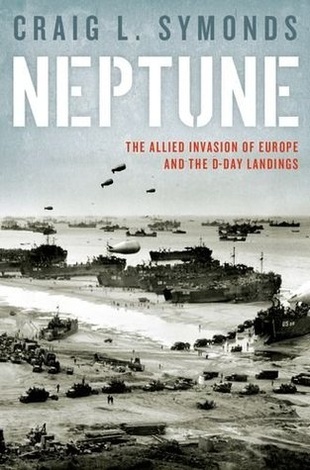
by Craig Symonds
Winner of NOUS' 2015 Samuel Eliot Morison Award for Naval Literature
Craig L. Symonds now offers the complete story of this Olympian effort, involving transports, escorts, gunfire support ships, and landing craft of every possible size and function. The obstacles to success were many. In addition to divergent strategic views and cultural frictions, the Anglo-Americans had to overcome German U-boats, Russian impatience, fierce competition for insufficient shipping, training disasters, and a thousand other impediments, including logistical bottlenecks and disinformation schemes. Symonds includes vivid portraits of the key decision-makers, from Franklin Roosevelt and Churchill, to Marshall, Dwight Eisenhower, and Admiral Sir Bertram Ramsay, who commanded the naval element of the invasion. Indeed, the critical role of the naval forces--British and American, Coast Guard and Navy--is central throughout.
Ordering Info: Amazon
Publisher: Oxford University Press, 2014

by Jeffry Cox
Finalist for NOUS' 2015 Samuel Eliot Morison Award for Naval Literature
A fresh look at the disastrous Java Sea Campaign of 1941–42 which heralded a wave of Japanese naval victories in the Pacific but which eventually sowed the seeds of their eventual change in fortunes.
Ordering Info: Amazon
Publisher: Osprey Publishing, 2014

by Ed Offley
Finalist for NOUS' 2015 Samuel Eliot Morison Award for Naval Literature
In The Burning Shore, acclaimed military reporter Ed Offley presents a thrilling account of the bloody U-boat offensive along America’s east coast during the first half of 1942, using the story of Degen’s three war patrols as a lens through which to view this forgotten chapter of World War II.
A gripping tale of heroism and sacrifice, The Burning Shore leads readers into a little-known theater of World War II, where Hitler’s U-boats came close to winning the Battle of the Atlantic before American sailors and airmen could finally drive them away.
Ordering Info: Amazon
Publisher: Basic Books, 2014
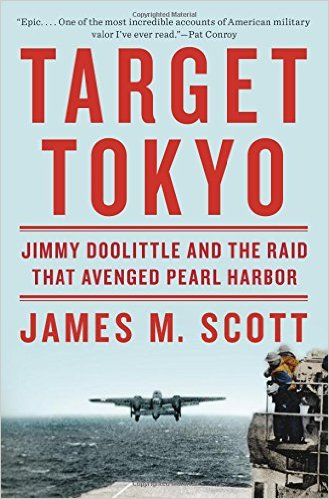
by James M. Scott
The dramatic account of one of America’s most celebrated—and controversial—military campaigns: the Doolittle Raid.
Ordering Info: Amazon
Publisher: W. W. Norton & Company, 2015



















by Richard D. Camp
Finalist for NOUS' 2024 Samuel Eliot Morison Award for Naval Literature
Marine historian Dick Camp knew Craig personally and has woven Craig’s own account of his service into context. Craig’s recollections are more than recitations of facts, his account of leading in World War II provides the perspective of a combat leader balancing the mission objectives with responsibility for the men he leads. His account of fighting during the Korean War section provides insight into how unprepared the United States was and how a determined, well-led Marine brigade was able to stop the North Korean advance and prevent them from overrunning South Korea.
Ordering Info: Casemate
Publisher: Casemate Publishers, 2023
by Stan Fisher
Finalist for NOUS' 2024 Samuel Eliot Morison Award for Naval Literature
The ability of the United States Navy to fight and win a protracted war in the Pacific was not solely the result of technology, tactics, or leadership. Naval aviation maintenance played a major role in the U.S. victory over Japan in the second World War. The naval war against Japan did not achieve sustained success until enough aircraft technicians were available to support the high tempo of aviation operations that fast carrier task force doctrine demanded.
Ordering Info: Naval Institute Press
Publisher: Naval Institute Press, 2023
by Phillip T. Parkerson
Finalist for NOUS' 2024 Samuel Eliot Morison Award for Naval Literature
The Brooklyn-class light cruiser USS Boise (CL-47) was one of the most famous US combat ships of World War II, already internationally renowned following her participation in the naval battles in the Solomons in 1942.
USS Boise’s war not only gives us an insight into how one ship navigated a global conflict, but also an insight into the experiences of the men who served on her, and a new perspective on the naval campaigns of the war.
Ordering Info: Casemate
Publisher: Casemate Publishers, 2023
by Mark E. Stille
Finalist for NOUS' 2024 Samuel Eliot Morison Award for Naval Literature
Leyte was a huge and complex action, actually consisting of four major battles, each of which are broken down in detail in this book, using original sources. The plans of both sides, and how they dictated the events that followed, are also examined critically.
Ordering Info: Osprey
Publisher: Osprey Publishing, 2023
by Lewis F. McIntyre
Finalist for NOUS' 2023 Samuel Eliot Morison Award for Naval Literature
The US Navy’s “Take Charge and Move Out” (TACAMO) mission provides essential airborne communications to the US nuclear deterrence forces. Today it is a thriving community, respected by the Navy and the US strategic defense forces.
But it wasn’t always so. Despite the enormous importance of the mission, for the first decade of their existence, the TACAMO squadrons did not provide a viable career path for officers, instead being a “one and done” tour for the junior officers who found themselves unluckily so assigned. A second tour in the squadrons was considered to be professional suicide. But in 1975, inspired by a significant commanding officer, a handful of lieutenants put their faith in a community that did not yet exist, betting their careers on that second tour. From their faith and courage was born the TACAMO community.
This is the story of the birth of TACAMO, in the words of those who built the community from scratch.
Ordering Info: Amazon
Publisher: Casemate, 2022
by Paul Stillwell
Winner of NOUS' 2022 Samuel Eliot Morison Award for Naval Literature
The first-ever biography of Vice Admiral Willis A. Lee Jr., who served a key role during World War II in the Pacific. Battleship Commander explores Lee's life from boyhood in Kentucky through his eventual service as commander of the fast battleships from 1942 to 1945. Paul Stillwell draws on more than 150 first-person accounts from those who knew and served with Lee from boyhood until the time of his death.
Ordering Info: Naval Institute Press
Publisher: Naval Institute Press, 2021
by M. Ernest Marshall
Winner of NOUS' 2020 Samuel Eliot Morison Award for Naval Literature
Suspecting a war with Japan somewhere over the horizon, the American Navy needed a means of conducting surveillance of the vast Pacific Ocean to guard against invasion. Surface vessels were too slow, and the Navy had too few of them, and airplanes lacked the range to cover the Pacific Ocean. The Navy turned to airships (dirigibles) as a solution - vehicles that could range for thousands of miles in the air on a single tank of fuel. Rear Admiral Herbert V. Wiley and Vice Admiral Charles E. Rosendahl - close friends - were with the Navy's airship program from beginning to end. After the loss of the Navy's last airship, Rosendahl went on to develop the blimp program that guarded America's entire coastline during WW II.
Ordering Info: Amazon
Publisher: Naval Institute Press, 2019
by Stephen M. Younger
Finalist for NOUS' 2019 Samuel Eliot Morison Award for Naval Literature
USS Nevada (BB-36) was America's first modern battleship. When her keel was laid in 1912, kings and emperors still ruled much of the world. When she finally slipped beneath the waves in 1948, America was the undisputed global superpower.
Nevada was revolutionary for her time: the first "superdreadnought"; the first U.S. warship to be oil fired; the first to have a triple-gun main turret; and, the first to have all-or-nothing armor. In World War I, she was based in Queenstown, Ireland, to provide protection for American convoys bringing troops to Europe. She survived the naval reduction treaties of the 1920s and was rebuilt in 1928 with the latest technology. The only battleship to get underway at Pearl Harbor, suffered damage from Japanese bombs and torpedoes and sank in shallow water. Raised and repaired, she did convoy duty in the North Atlantic before joining the invasion fleet for D-Day and the landings in Southern France. Shifting to the Pacific, Nevada provided bombardment support at Iwo Jima and Okinawa. The end of the war saw her outgunned and outmoded, but her contributions were not over. In 1946, she survived not one but two atomic tests, the second of which left the battleship too radioactive for scrapping. On a sunny day in 1948, Nevada was towed off the coast of Oahu and used for target practice. After five days of pounding by everything the Navy could throw her, Nevada was dispatched by a torpedo. She died a warrior's death.
Silver State Dreadnought is the story of a remarkable ship, but it is also the story of the remarkable men who sailed in her. Nevada's first captain, William S. Sims, brought his unique style of leadership to America's premiere battleship and set the tone for what became known as the "Cheer Up Ship." As Nevada aged, the ship gained the affectionate name "The Old Maru," beloved by all who served in her.
Ordering Info: Amazon
Publisher: Naval Institute Press, 2018
by John Wukovits
Winner of NOUS' 2018 Samuel Eliot Morison Award for Naval Literature
An epic narrative of World War II naval action that brings to life the sailors and exploits of the war's most decorated destroyer squadron. When Admiral William Halsey selected Destroyer Squadron 21 (Desron 21) to lead his victorious ships into Tokyo Bay to accept the Japanese surrender, it was the most battle-hardened US naval squadron of the war. But it was not the squadron of ships that had accumulated such an inspiring resume; it was the people serving aboard them. Sailors, not metallic superstructures and hulls, had won the battles and become the stuff of legend. Men like Commander Donald MacDonald, skipper of the USS O'Bannon, who became the most decorated naval officer of the Pacific war; Lieutenant Hugh Barr Miller, who survived his ship's sinking and waged a one-man battle against the enemy while stranded on a Japanese-occupied island; and Doctor Dow "Doc" Ransom, the beloved physician of the USS La Vallette, who combined a mixture of humor and medical expertise to treat his patients at sea, epitomize the sacrifices made by all the men and women of World War II. Through diaries, personal interviews with survivors, and letters written to and by the crews during the war, preeminent historian of the Pacific theater John Wukovits brings to life the human story of the squadron and its men who bested the Japanese in the Pacific and helped take the war to Tokyo.
Ordering Info: Amazon
Publisher: Da Capo Press, 2017
by Jeffrey Cox
Finalist for NOUS' 2018 Samuel Eliot Morison Award for Naval Literature
Following the disastrous Java Sea campaign, the Allies stopped the Japanese advance at Coral Sea and Midway. But the Japanese still threatened to build a network of bases in the South Pacific and threatened to cut off Australia. In response, Allies made a desperate move by starting their first offensive of the Pacific War. Their first target: a new Japanese airfield in a relatively unknown place in the Solomon Islands called Guadalcanal.
Hamstrung by obsolete pre-war thinking and a bureaucratic mind-set, the US Navy had to adapt on the fly in order to compete with the mighty Imperial Japanese Navy. Starting with the amphibious assaults on Guadalcanal and Tulagi and continuing with the worst defeat in US Navy history, the campaign quickly turned into a see-saw struggle where the evenly matched foes struggled to gain the upper hand and grind out a victory.
Following on from his hugely successful book Rising Sun, Falling Skies, Jeffrey R. Cox tells the gripping story of the first Allied offensive of the Pacific War, as they sought to regain dominance in the Pacific.
Ordering Info: Amazon
Publisher: Osprey Publishing, 2018
by Thomas McKelvey Cleaver
Finalist for NOUS' 2018 Samuel Eliot Morison Award for Naval Literature
On October 27, 1942, four “Long Lance” torpedoes fired by the Japanese destroyers Makigumoand Akigumo exploded in the hull of the aircraft carrier USS Hornet (CV-8). Minutes later, the ship that had launched the Doolittle Raid six months earlier slipped beneath the waves of the Coral Sea. Of the pre-war carrier fleet the Navy had struggled to build over 15 years, only three were left: USS Enterprise, which had been badly damaged in the battle of Santa Cruz; the USS Saratoga (CV-3), which lay in dry dock, victim of a Japanese submarine torpedo; and the USS Ranger (CV-4), which was in mid-Atlantic on her way to support Operation Torch.
For the American naval aviators licking their wounds in the aftermath of this defeat, it would be difficult to imagine that within 24 months of this event, Zuikaku, the last survivor of the carriers that had attacked Pearl Harbor, would lie at the bottom of the sea. Alongside it lay the other surviving Japanese carriers, sacrificed as lures in a failed attempt to block the American invasion of the Philippines, leaving the United States to reign supreme on the world's largest ocean.
This is the fascinating account of the Central Pacific campaign, one of the most stunning comebacks in naval history as in just 14 months the US Navy went from the jaws of defeat to the brink of victory in the Pacific.
Ordering Info: Amazon
Publisher: Osprey Publishing, 2017
by John Prados
Finalist for NOUS' 2017 Samuel Eliot Morison Award for Naval Literature
As Allied ships prepared for the invasion of the Philippine island of Leyte, every available warship, submarine and airplane was placed on alert while Japanese admiral Kurita Takeo stalked Admiral William F. Halsey’s unwitting American armada. It was the beginning of the epic Battle of Leyte Gulf—the greatest naval battle in history.
Acclaimed historian John Prados gives readers an unprecedented look at both sides of this titanic naval clash, demonstrating that, despite the Americans’ overwhelming superiority in firepower and supplies, the Japanese achieved their goal, inflicting grave damage on U.S. forces. And for the first time, readers will have access to the naval intelligence reports that influenced key strategic decisions on both sides.
Drawing upon a wealth of untapped sources—U.S. and Japanese military records, diaries, declassified intelligence reports and postwar interrogation transcripts—Prados offers up a masterful narrative of naval conflict on an epic scale.
Ordering Info: Amazon
Publisher: Caliber, Penguin Group (USA), 2016
by Stephen L. Moore
Finalist for NOUS' 2016 Samuel Eliot Morison Award for Naval Literature
Amid a seeming stalemate, a small group of U.S. Navy dive-bombers is called upon to help determine the island’s fate. When their carriers are lost, they are forced to operate from Henderson Field, a small dirt-and-gravel airstrip on Guadalcanal.
They help form the Cactus Air Force, tasked with making dangerous flights from their jungle airfield while holding the line against Japanese air assaults, warship bombardments, and sniper attacks from the jungle. When the Japanese launch a final offensive to take the island, these dive-bomber jocks answer the call of duty—turning back an enemy warship armada, fighter planes, and a convoy of troop transports.
Ordering Info: Amazon
Publisher: New American Library (Penguin Random House), 2015
by Vincent O'Hara
Finalist for NOUS' 2016 Samuel Eliot Morison Award for Naval Literature
World War II had many superlatives, but none like Operation Torch—a series of simultaneous amphibious landings, audacious commando and paratroop assaults, and the Atlantic’s biggest naval battle, fought across a two thousand mile span of coastline in French North Africa. The risk was enormous, the scale breathtaking, the preparations rushed, the training inadequate, and the ramifications profound.
Torch was the first combined Allied offensive and key to how the Second World War unfolded politically and militarily. Nonetheless, historians have treated the subject lightly, perhaps because of its many ambiguities. As a surprise invasion of a neutral nation, it recalled German attacks against countries like Belgium, Norway, and Yugoslavia. The operation’s rationale was to aid Russia but did not do this. It was supposed to get Americans troops into the fight against Germany but did so only because it failed to achieve its short-term military goals. There is still debate whether Torch advanced the fight against the Axis, or was a wasteful dispersion of Allied strength and actually prolonged the war.
Ordering Info: Amazon
Publisher: Naval Institute Press, 2015
by John Wukovits
Finalist for NOUS' 2016 Samuel Eliot Morison Award for Naval Literature
On April 16, 1945, the crewmen of the USS Laffey heroically withstood twenty-two kamikaze attacks at Okinawa in what the US Navy called "one of the great sea epics of the war." Using scores of personal interviews with survivors, the memoirs of crew members, and the sailors' wartime correspondence, historian John Wukovits breathes life into this nearly forgotten event and makes the ordeal of the Laffeyand her crew a story for the ages.
Ordering Info: Amazon
Publisher: Da Capo Press, 2015
by Craig Symonds
Winner of NOUS' 2015 Samuel Eliot Morison Award for Naval Literature
Craig L. Symonds now offers the complete story of this Olympian effort, involving transports, escorts, gunfire support ships, and landing craft of every possible size and function. The obstacles to success were many. In addition to divergent strategic views and cultural frictions, the Anglo-Americans had to overcome German U-boats, Russian impatience, fierce competition for insufficient shipping, training disasters, and a thousand other impediments, including logistical bottlenecks and disinformation schemes. Symonds includes vivid portraits of the key decision-makers, from Franklin Roosevelt and Churchill, to Marshall, Dwight Eisenhower, and Admiral Sir Bertram Ramsay, who commanded the naval element of the invasion. Indeed, the critical role of the naval forces--British and American, Coast Guard and Navy--is central throughout.
Ordering Info: Amazon
Publisher: Oxford University Press, 2014
by Jeffry Cox
Finalist for NOUS' 2015 Samuel Eliot Morison Award for Naval Literature
A fresh look at the disastrous Java Sea Campaign of 1941–42 which heralded a wave of Japanese naval victories in the Pacific but which eventually sowed the seeds of their eventual change in fortunes.
Ordering Info: Amazon
Publisher: Osprey Publishing, 2014
by Ed Offley
Finalist for NOUS' 2015 Samuel Eliot Morison Award for Naval Literature
In The Burning Shore, acclaimed military reporter Ed Offley presents a thrilling account of the bloody U-boat offensive along America’s east coast during the first half of 1942, using the story of Degen’s three war patrols as a lens through which to view this forgotten chapter of World War II.
A gripping tale of heroism and sacrifice, The Burning Shore leads readers into a little-known theater of World War II, where Hitler’s U-boats came close to winning the Battle of the Atlantic before American sailors and airmen could finally drive them away.
Ordering Info: Amazon
Publisher: Basic Books, 2014
by James M. Scott
The dramatic account of one of America’s most celebrated—and controversial—military campaigns: the Doolittle Raid.
Ordering Info: Amazon
Publisher: W. W. Norton & Company, 2015
